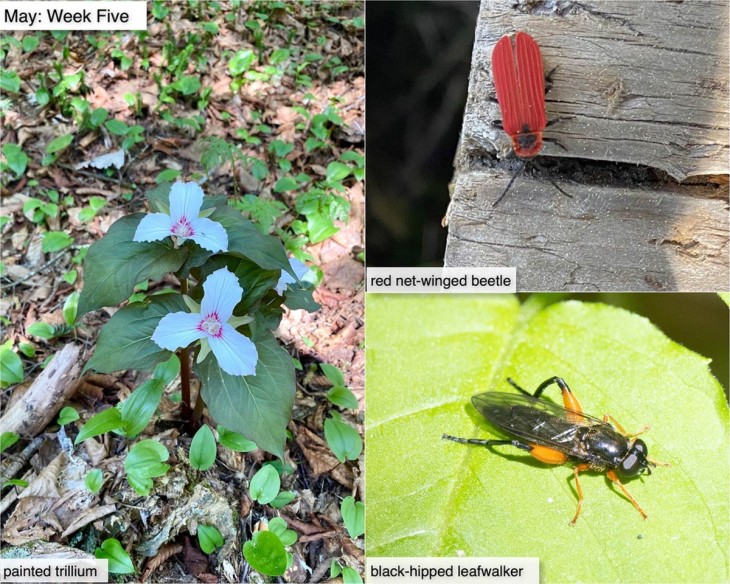This Week in the Woods, there are several showy wildflowers coming in bloom, including lady’s slippers, columbine, rhodora, and painted trillium. Meghan McCarthy McPhaul took this photograph of painted trilliums in the White Mountains. Fun fact: as noted in this profile by the U.S. Forest Service, trilliums are “flowering scapes.” Those big leafy looking things are in fact not leaves but bracts, and what looks like a stem is actually an overachieving rhizome.
With the warmer weather, we’re seeing many more forest insects, including those with aposematic coloration: flashy looks that warn off birds or other would-be predators. One of late May’s most vibrantly colored insects (also photographed by McPhaul) is the red net-winged beetle, a soft-bodied, slow moving beetle that feeds on rotting wood. It backs up its intense scarlet warning color with toxic chemicals, which it will exude when molested. Another name for the species is the golden net-winged beetle.
Sometimes, insect coloration is nothing more than elaborate bluffing. The black hipped leafwalker is a type of hoverfly (a fly able to remain more or less stationary in the air, like a helicopter) that feeds on nectar and pollen. However, its bright orange and black colors make it look like a wasp. The fly in this photo seemed very confident in its disguise; dusted with pollen from a past meal, it was basking on a leaf, and permitted close inspection-by-camera. A fancy name for the phenomenon of a prey species evolving to resemble a less palatable or better defended species is Batesian mimicry.
What have you noticed in the woods this week? Submit a recent photo for possible inclusion in our monthly online Reader Photo Gallery.


